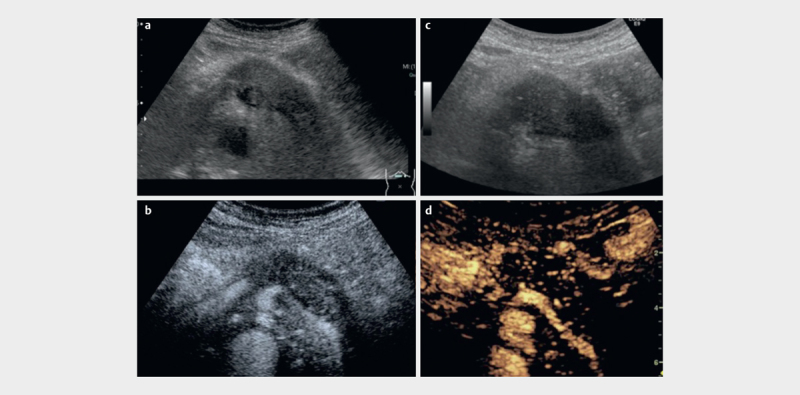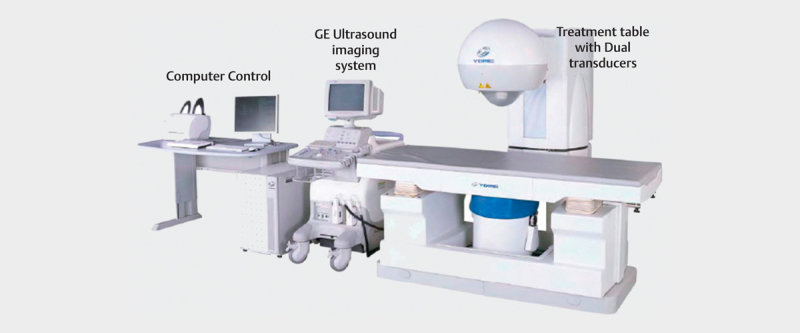高强度聚焦超声(HIFU)治疗不能切除的胰腺癌长期存活1例。
IF 1.6
Q3 RADIOLOGY, NUCLEAR MEDICINE & MEDICAL IMAGING
引用次数: 4
摘要
本文章由计算机程序翻译,如有差异,请以英文原文为准。



A Case of Unresectable Pancreatic Cancer with Long-Term Survival in High-Intensity Focused Ultrasound (HIFU) Therapy.
Despite advancements in imaging diagnosis, about 60% of cases of pancreatic cancer (PC) are still unresectable. Chemotherapy and radiochemotherapy are commonly performed as alternative treatments, but satisfaction with the results remains low. High intensity focused ultrasound therapy (HIFU) is expected to be a minimally invasive therapy for these cases. HIFU is an epoch-making therapeutic method and is a local therapy that converges a large number of ultrasonic transmission sources at one point at the target site of the tumor and cauterizes tissues from outside the body 1 2 3 .
Case Description
A 63-year-old male, who underwent CT examination at another medical center due to epigastric pain, was then diagnosed with a low-density tumor (65mm) infiltrating the celiac artery (CA) and superior mesenteric artery (SMA) in the pancreas body ( Fig. 1a ). It was histologically diagnosed as PC (UICC criteria; stage III) by EUS-FNA. There was no suitable surgery. Therefore, chemoradiotherapy was initiated due to locally advanced PC. Chemotherapy was performed with GS therapy (GEM 1000 mg/m 2 +S-1 100 mg/day), and radiotherapy with 50.4 Gy / 28 fraction. After receiving GS therapy (GEM 1000 mg/m 2 +S-1 100 mg/day) for 2 months, the PC was still diagnosed as progressive disease (PD) based on WHO criteria by CT. The patient presented at our hospital for HIFU therapy. Under sufficient informed consent, HIFU therapy was performed as an additive therapy to systemic chemotherapy. This clinical trial was approved by the ethics committee of our hospital (IRB: 890) and registered with University Hospital Medical Information (UMIN) and was initiated (UMIN000009969). B-mode US showed a hypoechoic mass in the pancreas body ( Fig. 2a ), and contrast-enhanced ultrasound (CE-US) showed isovascularity in previous HIFU therapy ( Fig. 2b ). The FEP-BY 02 HIFU Therapeutic System was used as the HIFU device. (Yuande Bio-Medical Engineering, Beijing, China) ( Fig. 3 ).
Open in a separate window
Fig. 1
CT imaging: a : CT before HIFU therapy showed a low-density mass (65 mm) infiltrating the CA and SMA in the pancreas body. b : CT imaging 3 months after HIFU therapy showed that the pancreas tumor had shrunk slightly. c : CT imaging after the second HIFU therapy (5 months after the first HIFU therapy) showed that the tumor had shrunk and PR in the therapeutic effect was obtained. d : CT imaging after the 4th HIFU therapy (19 months after the first HIFU therapy) showed the tumor size was unchanged (PR continued). e : CT imaging after the 7th HIFU therapy (39 months after the first HIFU therapy) showed continued PR until the patient passed away.
求助全文
通过发布文献求助,成功后即可免费获取论文全文。
去求助
来源期刊

Ultrasound International Open
RADIOLOGY, NUCLEAR MEDICINE & MEDICAL IMAGING-
CiteScore
3.00
自引率
0.00%
发文量
7
审稿时长
12 weeks
 求助内容:
求助内容: 应助结果提醒方式:
应助结果提醒方式:


